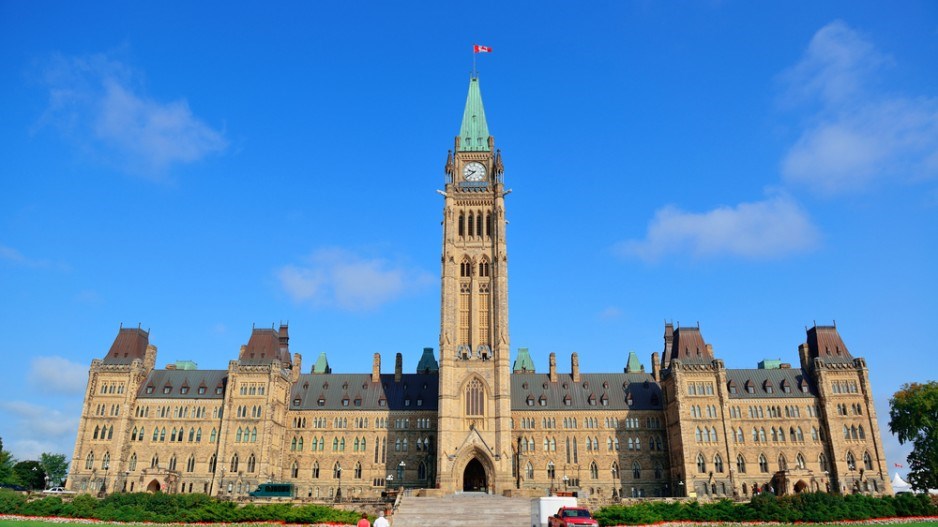Business groups greeted last week’s federal budget with praise for its commitment to investing in skills training, innovation and clean energy, while warning against a worrisome trend of structural deficits.
Canadian Finance Minister Bill Morneau delivered a budget March 22 that includes a new $11.2 billion national housing strategy, $7 billion for child care, money for skills training and a $28.5 billion deficit.
The Greater Vancouver Board of Trade gave the budget a B grade – praising a $20 billion commitment to public transit investments over 11 years and its restraint on tax reforms, while red-flagging the federal government’s lack of a plan to return to balanced budgets.
Gowling WLG characterized it as a “holding pattern” budget.
Most notable for business was what wasn’t in the budget, Gowling said in a budget analysis: a rumoured increase to capital gains tax rates.
The budget has net new spending of $8.2 billion over five years.
The deficit, projected to be $29.4 billion in the 2016-17 budget, came in at $23 billion and is now projected to be $28.5 billion in 2017-18.
Budget 2017 is more policy-oriented tinkering than spending-oriented, as the Liberal government’s major spending plans – including $120 billion in infrastructure over 10 years – were largely laid out in the 2016 budget.
“Many of the investments highlighted in this budget were a reallocation, repurposing or consolidation of funds,” said BC Chamber of Commerce president Val Litwin, “and there is very little in new spending, which is a consequence of the federal government running a $28 billion deficit.”
The budget includes no major new real sources of tax revenue, but provides $523.9 million to help the government crack down on tax cheats and close loopholes and end tax credits, including scrapping a 15% public transit tax credit. It raises taxes on alcohol and tobacco and applies the GST to ride-sharing services like Uber.
It allocates funding for Lower Mainlanders’ top two concerns: transportation and housing affordability.
The budget allocates $20 billion over 11 years for transportation, which includes $2.2 billion in 2017-18 for TransLink projects in Metro Vancouver, according to TransLink Mayors’ Council executive director Mike Buda.
It also allocates $11.2 billion over 11 years for a new National Housing Strategy – something Ottawa has not had since the 1980s, when much of the purpose-built rental housing and housing cooperatives in the Lower Mainland were built.
A National Housing Fund will provide municipalities and other organizations with low-cost loans to repair and build new purpose-built rental housing, and the government has committed to freeing up federal Crown land and buildings for social and affordable housing.
Jock Finlayson, executive vice-president and chief policy officer for the Business Council of BC, said a national housing strategy is unlikely to address the metropolitan concerns of Vancouver and Toronto.
“That’s $1 billion a year for 11 years,” he said. “B.C. might get $110 million of that per year, so I put it to you: what is $110 million of incremental federal funding for a national housing strategy actually going to do that addresses any concerns that people have about affordability in the B.C. market? My answer is that it will do very little.”
One area of focus in the budget that could benefit B.C. most is its emphasis on technology, innovation, renewable energy and clean technology – sectors that are particularly strong in the province. It also includes spending and policies aimed at growing Canada’s skilled labour force: $279.8 million over five years to build on the temporary foreign worker program and $27.5 million for credential recognition for skilled immigrant workers.
The over-arching plan is the Innovation and Skills Plan, which focuses on six business sectors: advanced manufacturing, agri-food, clean technology, digital industries, health and biosciences and clean resources. The plan’s goal is to increase Canada’s exports in those areas 30% by 2025.
Spending highlights include:
•a new $1.26 billion five-year Strategic Innovation Fund;
•$1.4 billion in new financing available to the clean-tech sector through the Business Development Bank and Export Development Canada;
•$950 million over five years to create business super clusters;
•$400 million over three years to help new startups with a new Venture Capital Catalyst Initiative program; and
•$400 million over five years, starting in 2017–18, to replenish the Sustainable Development Technology Canada SD Tech Fund for pre-commercialized technologies to undertake demonstration projects. •




